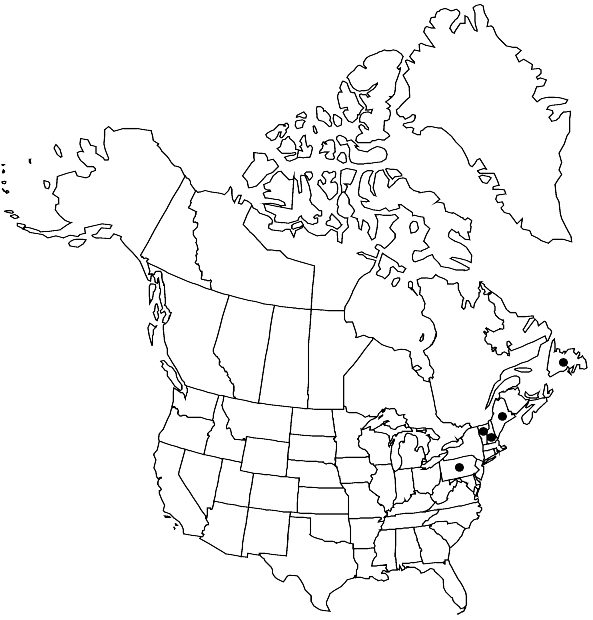Difference between revisions of "Sphagnum mcqueenii"
Sida 22: 959, figs. 1–6. 2006,.
FNA>Volume Importer |
imported>Volume Importer |
||
| (2 intermediate revisions by 2 users not shown) | |||
| Line 43: | Line 43: | ||
|publication year= | |publication year= | ||
|special status= | |special status= | ||
| − | |source xml=https:// | + | |source xml=https://bitbucket.org/aafc-mbb/fna-data-curation/src/2e0870ddd59836b60bcf96646a41e87ea5a5943a/coarse_grained_fna_xml/V27/V27_51.xml |
|genus=Sphagnum | |genus=Sphagnum | ||
|section=Sphagnum sect. Cuspidata | |section=Sphagnum sect. Cuspidata | ||
Latest revision as of 21:26, 5 November 2020
Plants robust and weak-stemmed; yellow to light brown; capitulum flat-topped and with ± conspicuous terminal bud. Stems light green; superficial cortex of 1–2 layers of moderately differentiated thin-walled cells. Stem leaves equilateral triangular, 0.8–1.1 mm; often spreading; apex more or less obtuse; leaves often spreading; hyaline cells usually septate and often fibrillose in proximal half of leaf. Branches unranked, ± straight, leaves moderately elongated at distal end. Branch fascicles with 2 spreading and 1–2 pendent branches. Branch stems green, with cortex enlarged with conspicuous retort cells. Branch leaves ovate-lanceolate, less than 2.2 mm, straight; undulate and sharply recurved when dry; margins entire; hyaline cells on convex surface with 0–1 apical pores and often with pseudopores, concave surface with to 12 round wall thinnings in cell angles and sometimes along commissures; chlorophyllous cells triangular in transverse section, just enclosed on the concave surface and broadly exposed on the convex surface. Sexual condition unknown. Spores not seen.
Habitat: Habitat poorly understood, but known from floating mats in poor fen habitats
Elevation: low to moderate elevations
Distribution

Nfld. and Labr. (Nfld.), Maine, N.H., Pa., Vt.
Discussion
Sporophytes of Sphagnum mcqueenii are unknown. Sphagnum torreyanum and S. atlanticum both have longer, narrower, and less sharply recurved branch leaves than does S. mcqueenii. Both S. cuspidatum and S. viride have acute stem leaves as compared to the obtuse stem leaves of this species. Sphagnum pulchrum has 5-ranked branch leaves and apiculate stem leaves, which contrast strongly with the unranked branch leaves and obtuse stem leaves of this species.
Selected References
None.